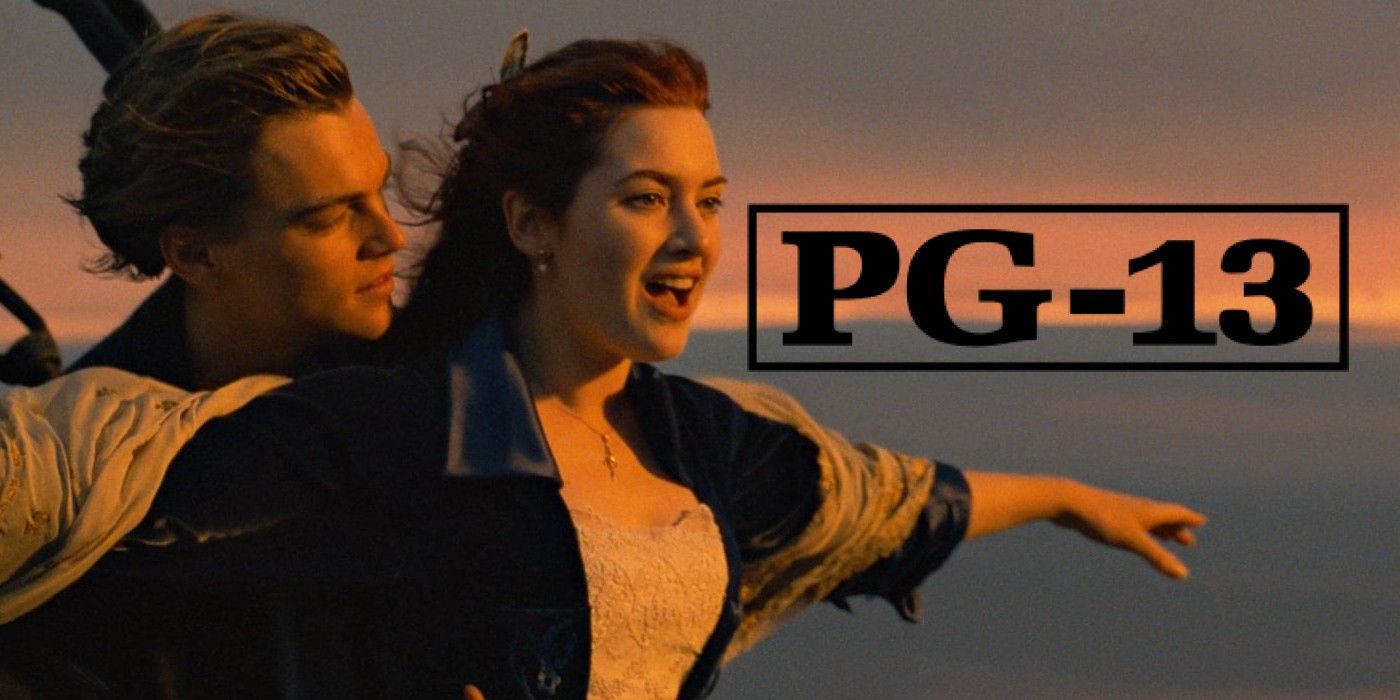How did Titanic manage to get off so lightly with a PG-13 rating? Released in 1997, James Cameron's Titanic cruised to unprecedented success at both the box office and that year's Oscars. With Leonardo DiCaprio and Kate Winslet playing star-crossed passengers from wildly different social classes, Titanic became a classic love story that remains hugely popular over two decades later. In the late 1990s, the entire world found themselves discussing the dimensions and buoyancy of a wooden door, and finding someone who hadn't bought a ticket to James Cameron's aqua extravaganza was all but impossible.
Titanic benefited from incredibly broad appeal, but one demographic who perhaps shouldn't have been watching Jack and Rose's backseat adventures were the kids. Aside from the predictable scenes of terror and peril, Titanic futures plenty of violence with both fists and firearms, harrowing scenes of people drowning, and a smattering of swearing below decks. Of course, there's also Kate Winslet's famous nude scene, in which Rose strips off and poses like one of Jack's French girls wearing nothing but the pricey Heart of the Ocean around her neck. Considering all of the above, it's a minor miracle that Titanic was able to get away with a surprisingly light PG-13 rating.
According to the MPAA's PG-13 guidance, a film with such a rating will be free from "persistent" or "realistic" violence. Titanic just about slips through this category, and much of the death can be considered historical in context, but it's the nudity where the PG-13 rating really begins to look inconsistent. Nudity is permitted under PG-13, but only when the scene is " not sexually-orientated." Titanic could feasibly argue that the drawing scene is artistic instead of sexual, and the fact Rose and Jack bunk up later is irrelevant. Others might suggest that the scene is one of the most sexually charged in cinematic history, and in conjunction with the blood, death and swearing, Titanic was surely on course for an R-rating before somehow veering off and colliding with a PG-13.
A 2011 report by Slate argued that the Hollywood ratings system inherently favored big-budget productions, and was more likely to come down heavier upon independent pictures. The investigation compared Titanic to 1999's Besieged, which landed an R-rating despite having less nudity, swearing and violence than James Cameron's fictionalized account of the Titanic's maiden voyage. Slate concluded that the membership system of the MPAA (which is comprised of representatives from Hollywood's major studios) was flawed, and a more independent alternative was required to ensure complete parity.
Whether down to artful nudity or studio politics, Titanic is evidently a borderline case - a relatively soft R, or one of the wilder PG-13s, but this is where the PG-13 rating proves a worthy addition to the system. Some will have no qualms about letting their 12-year-olds enjoy one of the most iconic love stories in cinematic history, while others would recoil at the thought of youngsters glimpsing Rose's risque art class. Rather than laying down the law with a hard R or giving the go-ahead with a PG, the middle option allows parents to make the final decision, while warning conservative types that spicy moments may lie within. But the key issue with Titanic's rating isn't protecting fragile young minds from violence and nudity, it's ensuring that all films are afforded a level playing field, and Titanic's PG-13 calls that into question.
In hindsight, Titanic's rating undoubtedly would've ruffled some feathers, catching families who were expecting 3 hours of educational history very much off guard. But without that PG-13, deserved or otherwise, cinema history would've played out very differently.


